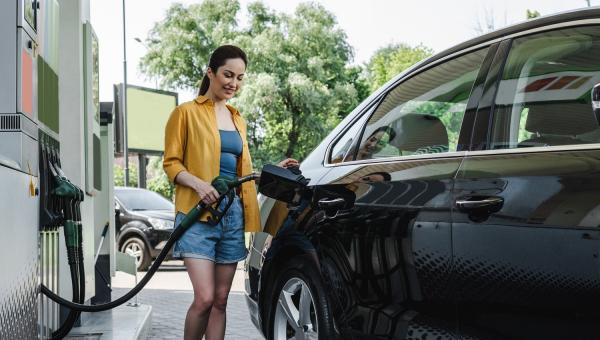Test Drive Notes Library
-
 Pros
Pros
- Looks. Kia has a smash hit with its one-size-larger Kia Telluride. So it’s no surprise that the new, redesigned Sorento has looks that resemble its more successful, larger sibling. It’s a nice looking, modern design that should appeal to a lot of buyers.
- Optional engine. The base Sorento comes with a 2.5 liter, non-turbo four-cylinder engine that produces 191 hp. We tested the turbo charged version of that engine that ups the power significantly, to 281 hp. That’s plenty for the Sorento. While not as smooth as the Telluride’s V6, the turbo four moves the Sorento easily, and in a relaxed manner. And even with all that power, we saw 24 mpg overall, which is quite good. There’s also a 227 hp gas-electric hybrid option that’s EPA rated at 37 mpg overall. That might be the best choice.
- Handling. While the steering is light, the Sorento handles corners well, albeit with some body lean. It’s not sporty, but it’s definitely competent.
- Interior. We found the controls up to date, easy to understand and use. It’s got a nice, large, horizontally oriented infotainment screen. The front seats are comfortable. And in our higher end test car, there were two captain’s chairs in the second row. Those captains chairs make access to the folding third row very easy. And while we wouldn’t want to sit back there, having the option of a foldable third row of seats can make your family vehicle a bit more useful. For instance, if you have a couple of extra people you want to drive to dinner, and it’s not far, and they’re short, and slim... and young enough to still bend well, that could work. Or if you want to drive a couple of your kids’ friends home from a soccer game, you could raise up the third row and get it done.
- Decent visibility. A large windshield and low side-window sills make it easy for the driver to see around him or her.
- Available extras. You can get the Sorento loaded with lots of goodies, including an impressive adaptive cruise control with steering assist. That allows you to relax on the highway, while the Sorento pretty much steers itself and maintains a safe distance from the car in front of you. The Sorento also has a cool feature where — when you turn on a direction signal — the tachometer or speedometer (depending on whether you’re turning left or right) will turn into a video monitor that shows you the view along that side of the car. The feed comes from a rear facing camera in each side view mirror. It’s great for changing lanes, or seeing a bicycle coming up behind you in city driving. The only thing missing for us is a head up display.
-
 Cons
Cons
- Generic. Aside from the styling, the Sorento doesn’t really distinguish itself among its competitors. It feels like a commodity mid-size crossover. The larger Telluride really stands out, and we consider it the best in its class. But the Sorento lacks that magic where the whole is greater than the sum of its parts. And loaded up like our X-line AWD test car at $44,000, it’s the same price as a mid-range Telluride. Honestly, driving the Sorento made us like the Telluride more.
- Stiff ride. As is often the case with mid-priced cars, you can have good handling or a comfortable ride, but not a lot of both. While it’s comfortable on smooth surfaces, if you try to turn while driving over rough roadway, it skitters a bit. You also feel bumps and imperfections that get transmitted into the cabin.
- Cramming in that third row. We mention above that the folding third row of seats is really for the kiddies. And if you truly need a third row of seats frequently, you’d be better off with a bigger vehicle. When the Sorento’s third row is in use, it leaves almost no cargo room in the back. Maybe enough room for a couple of carry-on suitcases, stacked on their sides. But you’d never get six people and their luggage on a vacation in this car. Realistically, this is a car in which you’d leave the third row folded down the vast majority of the time, and raise it for rare occasions.
Test Drive Notes Library
Get the Car Talk Newsletter
 Pros
Pros Cons
Cons


